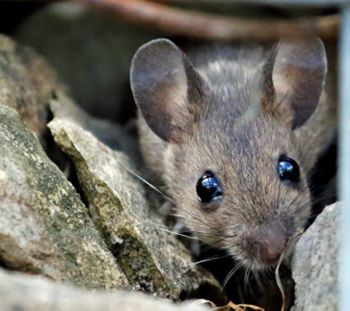
© Mammal Society/Steve Midgley
Programmes such as the BBC's Blue Planet and Hugh's War on Plastic, have drawn attention to the threat plastics pose to sea-life. But little is known about the impacts on Britain's land-based species, such as hedgehogs, rabbits and voles.
Now, a new research project from the University of Sussex and the Mammal Society, aims to assess the exposure of wild mammals to waste plastics across Britain. By analysing the droppings of some of our most widespread species, including squirrels, mice, rats and shrews, they aim to uncover the extent to which these plastics are eaten, and understand the health threats posed by different types of plastic, through both ingestion and entanglement.
In the UK, food packaging accounts for 67% of plastic waste, which is far higher than that of many other EU countries. Reports suggest that contamination by microplastic (tiny particles of plastic) in terrestrial habitats may be as much as 30 times higher than in marine habitats, yet most attention has so far focused on sea-life. The only studies conducted so far on terrestrial ecosystems have mostly focused on worms, soils and chickens and, worryingly, these results have suggested that microplastics are present in high quantities.
Led by a Sussex Masters student, the project will focus on small mammals such as mice, rats, shrews, rabbits, hedgehods, squirels and voles, in order to assess the health of ecosystems as a whole. If small mammals, which are vital prey for a wide variety of species such as foxes, weasels, barn owls and kestrels, are ingesting microplastics, this would have a knock-on impact throughout the food chain.
Professor of Environmental Biology at Sussex and Chair of the Mammal Society, Fiona Mathews, said "One in five of Britain's mammals is at risk of extinction, and the conservation status of many other species remains unknown. It is therefore important to identify, and address, possible threats.
"For example, currently we don't know whether hedgehogs are ingesting microplastics, but given the evidence of microplastics in earthworms, then this seems a likely possibility. In addition, small mammals are the most likely group of animals to actively chew larger pieces of plastic, particularly that which has been used for wrapping food.
"This could be a key pathway for microplastics getting into soils, waterways and food webs in terrestrial ecosystems."
Over time, many forms of plastic waste degrade into smaller fragments which can end up in soil and waterways. In addition, land-based wildlife frequently encounter plastic from sources such as carrier bags, plastic bottles and packaging, and chew on them. Not only could this be a direct threat to the animals themselves, but the tiny plastic fragments that emerge in their droppings are likely to enter soils and be ingested by worms and other invertebrates.
Through studies in marine ecosystems, it is understood that there are also cumulative effects when smaller organisms that have ingested microplastic are eaten by their predators. While little is known of the impacts of microplastics on the health of mammals and birds, it has been shown that even small quantities of microplastics can stop normal growth and reduce the chance of successful breeding in animals such as marine worms and snails.
Emily Dempster, a Masters student at the University of Sussex, is leading the research. She said "I am very excited to have the opportunity to work on this for my masters research and to be heading up the first, hugely important, research project into the ingestion of plastics by terrestrial mammals. I have started to work on the samples and, worryingly, I've already found a number that appear to contain microplastics."
The results of the study will be published in Summer 2021.
There are a number of ways to get involved in the study or donate to the Mammal Society's appeal for the equipment they vitally need for the laboratory analyses.






